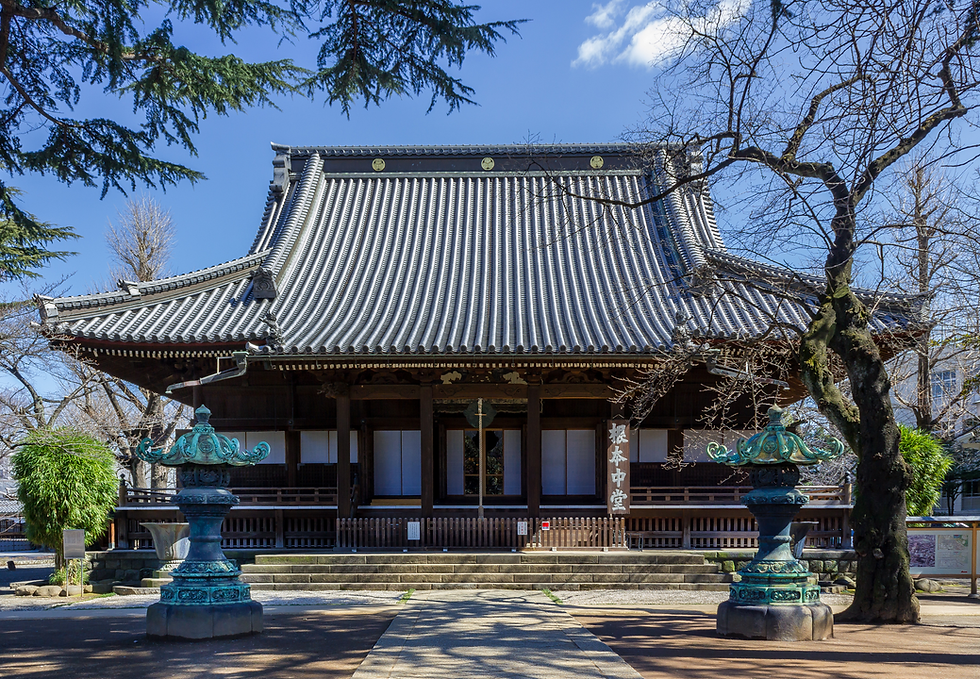Ame-Yokocho — Tokyo’s Living Black Market | MK Deep Dive
- M.R. Lucas
- Oct 16
- 3 min read
Updated: Nov 4

Tokyo can sometimes feel too sterile, too commercialized. All pristine, all polish, no grit—no trace of grizzled life or decay if you don’t know where to look. Ame-Yokocho is the antidote: a sprawling open-air bazaar pressed beneath the rattle of the JR Ueno Line, where hawkers bellow over the din to sell their wares at bargain prices, where fishmongers battle for attention, and where an atmosphere of urban melancholy and romance hums through the scent of grilled squid and train steel — far from the glitz of Ginza’s high society.
Here, people are real. This is Tokyo at its most direct and honest — a slice of life after slice of life, where people-watching can fill a day without a moment of boredom, where the ambiance wraps around you like a warm blanket.
The pristine gives way to imperfection. Narrow lanes drip with condensation; friends and colleagues gather to forget their troubles as they cling to oversized mugs of frothy highballs. The scurrying of a rat or two does nothing to disturb their laughter. Old Showa-era signage lingers above red paper lanterns that sway and flicker beside neon and fluorescent light — buzzing faster than the eye can register, splashing color across metallic shutters, where crowds of passersby seem suspended between time and nostalgia itself.

The lanes radiate a chaotic, gaudy Kansai energy — more Osaka than Tokyo — with merchants unafraid to shout, pile up clutter, and flood the senses. It’s rough around the edges in all the best ways. This isn’t the polished metropolis that sprinted through the 1980s into the 2000s — and has been content to live there ever since. This is the authentic Tokyo — where wages have flatlined but the human spirit hasn’t.
At times, Ame-Yoko feels closer to a night market in Bangkok or Hong Kong than anywhere in Japan. Thai, Vietnamese, Chinese, Nepalese, and Bangladeshi traders stand shoulder to shoulder with long-running Japanese businesses, competing for space and attention. Exotic spices mingle with the sweetness of local confections, creating a sensory blend that’s equal parts chaos and comfort. It’s a shopping street built on character rather than control — a living remedy to the manicured department stores that loom just a few blocks away.

Its roots lie in the ashes of war. In the late 1940s, Tokyo’s firebombed districts were rubble, morale at rock bottom, and rations scarce. Demobilized soldiers returning from Manchuria began setting up makeshift stalls known as tekiya, selling whatever they could: rice, vegetables, Zippo lighters, Hershey’s chocolates, Ray-Bans, and U.S. military jackets (which you can still buy here today). Some say this scrappy street trade seeded Japan’s postwar underworld.
The occupying forces heavily rationed sugar, but the craving for sweets endured. “Ame” means candy in Japanese, though some insist it also nods to “America,” a wink to the surplus goods that filled the stalls. Thus, Ame-Yokocho — Candy Alley — was born, an improvised marketplace that refused to die.
By the 1950s, the area was booming. Ame-Yoko became the first place in Japan to popularize dungarees — yes, dungarees; it just sounds better than “denim jeans” — and perhaps the birthplace of Tokyo’s long romance with Americana. The district expanded relentlessly, now home to more than 400 shops selling everything from coffee beans and gold watches to seafood and, somehow, an absurd number of shoes. (Truly, the footwear density here borders on metaphysical.)

Unlike most of Japan, haggling is allowed — not exactly encouraged, but permitted — so don’t be shy about testing those bargaining skills you picked up in Vietnam. Before leaving, grab a silk souvenir bomber jacket embroidered with phoenixes, tigers, or dragons: perfect attire for a Jackie Chan extra about to get walloped over the head with a pool cue.
Ame-Yokocho is a vibe. By day or by night, it shows a different face — both raw and romantic, always alive. Come around New Year’s for the bargain-hunter’s dream, when the narrow lanes erupt into a jam-packed carnival of shouting vendors and laughing shoppers.
With Ueno Park and Ueno Zoo just a short stroll away, it’s the perfect full-day stop. I bring nearly every visitor here. It’s the Tokyo that refuses to be tamed — the one that still sweats, laughs, bargains, and endures long after midnight.
The MK Take

Let MK be your guide to the Tokyo that never cleaned up its act — and never should.
Image Credits
“SEIKO セイコー Clock 時計, Ameyoko Market in Ueno Tokyo Japan” by Arjan Richter is licensed under CC BY 2.0.
“Ueno Ameyoko Market” by MIKI Yoshihito. (#mikiyoshihito) is licensed under CC BY 2.0.
“Ameya Yokocho Shopping Street” by Dick Thomas Johnson is licensed under CC BY 2.0.




Comments